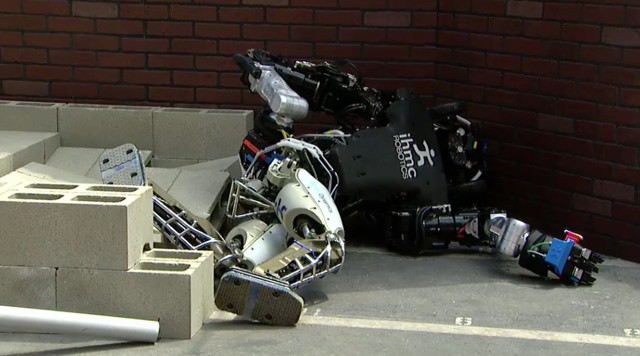Just last week, 23 robots competed for US $3.5 million in prizes in Pomono, California where one robot emerged as the winner as this milestone can herald a future where robots and humans can work together, contrary to what Elon Musk and Stephen Hawking were warning everyone about artificial intelligence.
However, the rise of the machines will not occur anytime soon as many participating robots also failed gloriously.
This robotic contest called the DARPA Robotics Challenge (DRC) was apparently spawned from the nuclear disaster from the recent Fukushima earthquake in Japan in order to develop more robust and flexible robotic rescuers.
The challenge involves the robots going through a specific navigation within a simulated disaster environment where it can perform crucial tasks like turning a water valve or driving a vehicle and most importantly, crawling over debris.
According to IEEE Spectrum's Erico Guizzo and Evan Ackerman, there were a lot of robots that fell over where a bunch of them fell over numerous times. Even if nobody wanted to see a robot fall to win the contest, it seemed like everyone wanted to see the robots fall or even catch a glimpse of the possibility of robots falling over that kept everyone at the edge of their seats.
A video from the IEEE Spectrum went viral showing these robot falls.
According to event organizer Gill Pratt, these robots are designed big where lots of metal are utilized and it's surprising to see people filled with fear and anxiety upon seeing them fall down. There were even groans of sympathy when the robots fell and when the robot scored a point, people cheered which is a surprisingly, extraordinary reaction considering that these robots are just made to perform technical tasks for humans and not to make a similar human connection.
These robots are not capable of making any decisions for themselves where they are specifically designed to scan and measure the spaces during the challenge before passing this information to the human operator teams from a distance of a quarter of a mile.
The main idea of the challenge is to go to dangerous places where humans cannot.
The winner of the robotic challenge is South Korean team KAIST with a robot called DRC Hubo. Its impressive performance involves completing the course in 44 minutes and 28 seconds against all the other challengers.
DRC Hubo's winning strategy also stems from its ability to stand upright on two legs similar to a human where it can also kneel on wheels that are built inside its knees to move further with greater ease and stability.



























